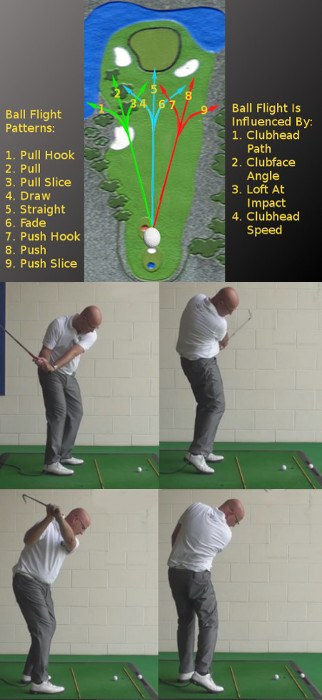What Is A Cut In Golf

In the world of golf, precision, skill, and strategy intertwine to create a captivating and challenging sport. As with any competitive endeavor, golf has its own set of rules and regulations that govern gameplay and tournament progression. One essential element that often comes into play is the concept of a “cut.” But what exactly does it mean in the context of golf?
A cut in golf refers to a predetermined score threshold that determines which players continue to compete in the subsequent rounds of a tournament. It serves as a filter, narrowing down the field of participants to the top performers. This fundamental aspect of professional golf tournaments ensures fair competition, manages field size, and enhances the overall experience for players and spectators alike.
Understanding the intricacies of a cut in golf goes beyond merely differentiating it from similar terms in golfing jargon. It delves into the historical context, the factors influencing the cut line, the purpose behind its implementation, and the impact it has on golfers’ performance and strategies. Furthermore, exploring famous instances and controversies surrounding the cut offers insights into the thrilling and sometimes contentious nature of the sport.
Join us as we dive into the world of golf cuts, exploring its significance, implications, and strategies to navigate this essential aspect of the game. Whether you’re an aspiring golfer seeking to improve your chances or an avid fan looking to deepen your understanding, this exploration will shed light on the intriguing role of a cut in the world of golf.

What is a cut in golf?
At its core, a cut in golf refers to a predetermined score threshold that determines which players continue to play in the subsequent rounds of a tournament. Typically, a cut is implemented after the completion of a specific number of rounds, narrowing down the field of participants. This process ensures that only the top-performing players proceed to compete further.
While a cut primarily applies to professional golf tournaments, it is crucial to differentiate this term from other similar phrases in golfing parlance. For instance, “cut” should not be confused with “slice,” which refers to the flight path of a golf ball veering to the right for right-handed players (or to the left for left-handed players).
Historical Context: The Evolution of the Term “Cut”
The term “cut” in golf has its origins in the early days of the sport when the field size exceeded practical limits, necessitating a reduction in the number of players after a certain stage. This practice aimed to ensure smoother tournament operations and a more competitive environment.
How is a cut determined in professional golf tournaments?
In professional golf tournaments, the cut is typically determined by a cut line—a score threshold that separates players who qualify to continue from those who are eliminated. The cut line is usually set after the completion of the second round, although the exact timing may vary depending on the tournament format.
Factors influencing the cut line
Several factors come into play when determining the cut line in professional golf tournaments. These factors may vary from tournament to tournament and can significantly impact the number of players who make the cut.
- Number of players making the cut: The number of players who advance to the subsequent rounds varies based on the tournament’s rules. Some tournaments have a fixed number of players who make the cut, while others have a percentage-based system.
- Course difficulty: The design, layout, and conditions of the golf course play a crucial role in determining the cut line. If the course is particularly challenging, the cut line may be set at a higher score to account for the increased difficulty.
- Tournament format and rules: Each tournament has its unique format and rules, which can influence the cut line. Factors such as the number of rounds, the number of players initially competing, and the desired field size for subsequent rounds are considered in setting the cut line.
Why is a cut used in professional golf tournaments?
The implementation of a cut serves multiple purposes and has several benefits for professional golf tournaments. Let’s explore the reasons why a cut is utilized.
Ensuring fair competition
A cut ensures that only the most skilled and consistent players progress to the later stages of a tournament. By eliminating a portion of the field, the competition becomes more focused, allowing spectators to witness high-quality golf from the top performers.
Managing the field size
Professional golf tournaments often attract a large number of participants, making it logistically challenging to accommodate all players throughout the entire event. Implementing a cut helps manage the field size, ensuring that subsequent rounds proceed smoothly and efficiently.
Enhancing spectator experience
As spectators, witnessing exceptional golf is a captivating experience. By implementing a cut, tournaments eliminate underperforming players, thereby increasing the overall quality of play. This enhances the excitement and entertainment value for the spectators who follow the tournament.
Maximizing player performance
For the players themselves, the cut serves as a motivation to perform at their best. Knowing that they need to achieve a certain score to make the cut adds an element of pressure, pushing them to showcase their skills and strategize effectively to secure their spot in the tournament’s later stages.
How does the cut affect golfers’ performance and strategies?
The cut in professional golf tournaments has a profound impact on the performance and strategies employed by the participating golfers. Let’s delve into how the cut influences their approach to the game.
Pressure and psychological impact
The cut line introduces an additional layer of pressure for golfers, as their performance in the early rounds directly determines whether they continue in the tournament or face elimination. This added pressure can significantly impact their mindset, focus, and decision-making on the course.
Adjustments in game plan and mindset
Golfers who find themselves near the cut line often need to adapt their game plan and adopt a more strategic approach. Rather than taking unnecessary risks, they might opt for a more conservative playstyle, prioritizing consistency and avoiding costly mistakes that could jeopardize their chances of making the cut.
Importance of consistency and avoiding mistakes
To secure their position beyond the cut, golfers must showcase consistency and limit errors in their gameplay. Making unnecessary mistakes or struggling with inconsistent performance can result in missing the cut, leading to early elimination from the tournament.
Is there a cut in amateur golf tournaments?
While the cut is a common practice in professional golf tournaments, it is not as prevalent in amateur golf. Amateur tournaments often have different objectives and may focus more on fostering participation and creating an enjoyable experience for all players.
Overview of cut rules in amateur tournaments
In some cases, larger-scale amateur tournaments might implement a cut to manage the field size for subsequent rounds. However, the criteria and procedures for the cut in amateur golf tournaments can vary significantly compared to their professional counterparts.
Differences between professional and amateur cuts
Amateur cuts, if implemented, are typically less stringent than professional cuts. The purpose of a cut in amateur tournaments might be to select players for a specific final round or to create smaller divisions for further competition rather than eliminating a significant number of participants.
Impact of a cut on amateur golfers
For amateur golfers, experiencing a cut in a tournament can offer valuable insights and a taste of the competitive nature seen in professional golf. It can provide a new perspective on the challenges faced by elite golfers and serve as a learning experience to improve their own game.
Famous instances and controversies surrounding the cut in golf
Over the years, the cut in golf has witnessed several memorable moments and controversies that have captivated fans and created talking points within the golfing community. Let’s explore some notable instances related to the cut in professional golf tournaments.
Notable tournaments with dramatic cut moments
Certain tournaments have stood out due to their dramatic cut moments, where golfers have battled against the cut line, showcasing exceptional skill under intense pressure. These instances often create thrilling storylines that capture the attention of both casual fans and golf enthusiasts alike.
Controversies regarding cut decisions
Occasionally, controversies arise surrounding the cut decisions made in tournaments. Disputes may arise when players believe they should have made the cut based on specific circumstances or when the cut line is set in a way that sparks debate among players, fans, and analysts.
Impact of cut-related incidents on golfers’ careers
For individual golfers, experiencing a missed cut or facing contentious cut decisions can have long-lasting implications on their careers. Such incidents may serve as motivation for improvement, highlight areas for development, or even result in changes to their playing schedule or overall strategy.
How does a golfer’s performance in a cut affect their future opportunities?
The outcome of a cut can significantly influence a golfer’s future opportunities and prospects within the world of professional golf. Let’s examine the impact that making or missing the cut can have on a golfer’s career trajectory.
Advantages of making the cut
Making the cut in a professional tournament opens up a range of advantages for golfers. It allows them to continue competing against the best in the field, gain valuable experience, accumulate more prize money, and potentially earn valuable FedEx Cup or world ranking points.
Disadvantages of missing the cut
Missing the cut means an early exit from the tournament, resulting in missed opportunities for further exposure and potential earnings. Additionally, missing cuts consistently can have a detrimental effect on a golfer’s confidence and standing within the golfing community.
Career implications for professional golfers
Consistently making cuts and performing well in professional tournaments can have a positive impact on a golfer’s career. It can lead to increased sponsorships, invitations to prestigious events, access to higher-profile tournaments, and better overall visibility within the competitive golfing landscape.
Strategies to improve chances of making the cut
For golfers aiming to make the cut in professional tournaments, employing effective strategies and honing specific skills can significantly improve their chances of success. Let’s explore some practical tips to enhance performance and maximize the likelihood of making the cut.
Enhancing overall performance and skills
Improving overall performance in golf involves working on various aspects of the game. This includes developing a consistent swing, refining short game techniques, mastering course management, and enhancing physical fitness to endure the demands of competitive play.
Preparing mentally for cut situations
Golf is a mental game, and preparing oneself mentally for the pressure of a cut situation is crucial. Golfers can benefit from techniques such as visualization, positive self-talk, mindfulness, and working with sports psychologists to build resilience, focus, and confidence.
Analyzing previous cut records and statistics
Studying past cut records and statistics can provide valuable insights into trends and patterns. Golfers can analyze their own performance in tournaments with cuts, identify areas for improvement, and gain a deeper understanding of the scoring thresholds required to make the cut in various tournaments.
Conclusion: Embracing the Importance of Understanding the Cut in Golf
In conclusion, the concept of a cut in golf holds significant importance in professional tournaments, ensuring fair competition, managing field size, and enhancing the overall experience for both players and spectators. The cut has a profound impact on golfers’ performance, strategies, and future opportunities. By embracing the strategies and insights discussed in this article, golfers can optimize their chances of making the cut and progressing in their golfing careers. So, whether you’re a professional golfer aiming for success or an avid fan seeking a deeper understanding of the game, recognizing and appreciating the intricacies of the cut in golf will undoubtedly enhance your golfing journey.





